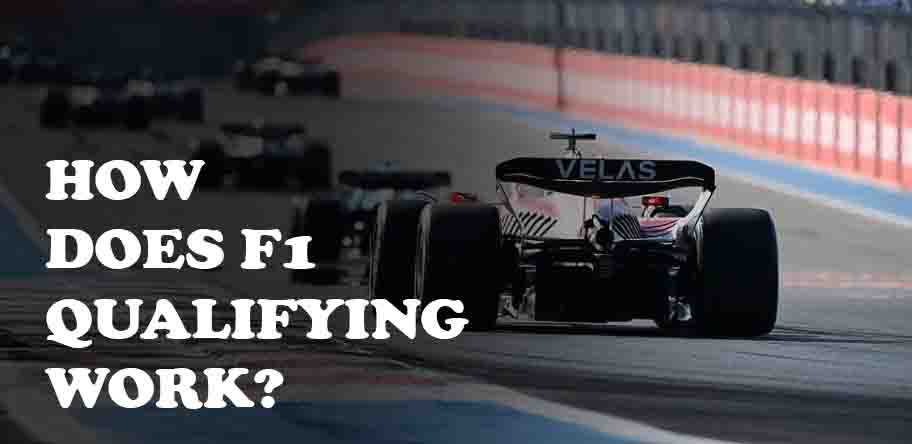F1 qualifying is one of the most thrilling and exciting parts of the Formula 1 Grand Prix weekend. It’s also a notoriously complicated part of the race, and it can take a lot of skill to get the perfect lap time. If you’re wondering how qualifying works, here’s how the process of qualifying for the Monaco Grand Prix works.
We explain how qualifying for the Formula One World Championship is done, who has a chance of winning and how it works.
Table of Contents
When Does Qualifying Happen?
Qualifying for the Monaco Grand Prix takes place over two days. The first day of qualifying is called Super Pole. This is where drivers have the chance to set a fast lap time for a single lap of the track. The fastest car on this lap will be declared pole position for the race.

During the second day of qualifying, drivers have the chance to set four laps that will determine the grid positions for the race. Drivers get the opportunity to change their tires and do minor adjustments to their cars between each lap. The driver who sets the fastest time during this session will have his starting position in the race decided.
Is there an Exception to Qualifying the Day Before a Race?
Yes, the day before a race is called the “qualifying day.” This means that if you are a professional runner, you can only race on this day. If you are not a professional runner, you are allowed to race any day of the year.
For example, if you are a semi-professional runner, and you decide to run in the New York City Marathon on April 23, 2016, you must run your first five miles in Manhattan the next day, on April 24, 2016, in order to qualify.
If you are a recreational runner and want to take part in the NYC Marathon, you can run anytime during the year. However, if you are a professional runner and want to race in the marathon, you must wait until the qualifying day in order to compete.
If you are not sure whether you are a professional or a recreational runner, you can consult a website that gives you the status of a particular race.
How Does the Qualifying Process Work in Formula 1?
When a driver joins Formula 1, the FIA (the governing body of Formula 1) provides him/her with a special type of car known as a “car number”. It is this number which forms the basis of the qualifying system.
Qualifying is the only part of the Grand Prix weekend where a car’s engine must be within certain technical specifications, to ensure it complies with the regulations.
The FIA uses a system of points which are earned by drivers according to their finishing positions in the various sessions of a Grand Prix weekend.
Each point equals one place on the grid for the following Grand Prix.
Points are awarded to the driver who has set the fastest lap in each of the five sessions, with the lowest-scoring driver in each session receiving one point.
Drivers may be penalised by the FIA, and/or receive a warning, if they do not comply with the regulations.
What Happens to a Runner Who Qualifies in a Race?
If you qualify in a race, you are given a number. If you choose to run in the race, you get to pick your place in line, based on where your number is in relation to your number of competitors.
If you do not pick a place, the race is divided into groups based on where your number is in relation to the entire field of runners. This way, everyone gets to run at a specific pace that is set for them.
If you qualify and you don’t pick a number, you are assigned one, and you cannot run in the race. If you are a professional runner and qualify for the New York City Marathon, for instance, you cannot run in the race if you haven’t picked a number. If you are a recreational runner, however, you can race anywhere and pick a number in the race.
Why Do I Need a Number to Run in a Race?
A number allows us to place a certain amount of responsibility on ourselves. For instance, we can pick a pace for ourselves, or we can choose to take part in a specific group. In this way, we can be more competitive and have a goal of achieving a certain result.
Some people prefer to use their body weight or the ability of their legs to determine a pace for themselves. However, others use a pacing strategy, or plan, which is the act of pacing yourself in order to achieve a particular goal.
What Are the Benefits of Qualifying in a Race?
One benefit of qualifying in a race is that it can lead to future success. If you qualify in the NYC Marathon and you decide to run in that same race every year, you are less likely to drop out of the race because you are familiar with the course.
Furthermore, it is easier to focus on the actual race when you are a professional runner. If you are a recreational runner and you run the same course every year, you can get frustrated because you know that, the longer you go, the more likely it is that you will drop out of the race.
What are the Rules for Qualifying?
The qualifying session is divided into three parts.
The first part is the warm up session, which is used for testing and getting the car ready for the actual qualifying.
Drivers can only use a standard set of tyres, and cannot run any of the special tyres which they can use in the race.
The second session is the timed session. Drivers are allowed two sets of tyres, which they can switch between during the session.
They must complete one full lap using each tyre in a specified sequence.
A driver cannot change tyres until his lap has been completed, except to stop for fuel or repair.
The third and final session is the final practice. During this session, drivers may use a different sequence of tyres than they did in the timed session.
Drivers are allowed one final run to decide their position on the grid, but must complete a minimum of two laps.
Can a Driver Change Tyres during Qualifying?
In 2011, the FIA introduced a system which allows drivers to switch tyres during qualifying.
A driver may switch the tyres used in the timed session with the tyres used in the final practice.
He/she may also switch the tyres used in the final practice with the tyres used in the timed session.
However, there are no restrictions on the number of tyres a driver can use, as long as they are in the correct sequence.
Drivers are not allowed to switch tyres in the warm up session, or when driving the actual race car.
Conclusion
In conclusion, to help you understand how qualifying works, we’ll look at the qualifying system in Formula 1. We’ll also explain how to do a qualifying lap, how to get the best time in the session, and what the qualifying results mean.
